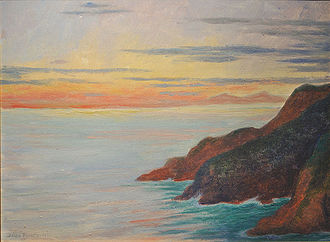Contemporary Landscape
Contemporary Landscape Painting
In the early 20th century, painters continued to embrace the landscape... In the second half of the 20th century, the definition of landscape was challenged and pressed to include concepts like urban landscapes, cultural landscapes, industrial landscapes, and landscape architecture. [1]
Luminous Morning, Valley of Mexico by Dr. Atl, 1942.
Clyde Aspevig, Unknown Title.
Some considered the landscape painting as obsolete but it still has strength and vigor as may be seen in this paintings.
In a sense, however, landscape never went away: It was just transformed into something unrecognizable, and has begun to emerge again in surprising places. The rise and fall of landscape painting tells an interesting story about art's relationship to the outside world over the last two centuries, and the ways the genre might be resurfacing today suggest just how unsettled our own relationship to nature has become." [2]
Petite Gallery






-
 Raoul Dufy, Regatta at Cowes, 1934.
Raoul Dufy, Regatta at Cowes, 1934.
-

Bibliography
Recent notable works include The Image of the City by Kevin Lynch #1960#, Life and Death of Great American Cities by Jane Jacobs #1961#, The Making of Urban America by John W. Reps #1965#, A Pattern Language by Christopher Alexander #1971#, Learning from Las Vegas by Robert Venturi, Denise Scott-Brown & Steven Izenour #1977#, Common Landscapes of America, 1580 to 1845 by J.R. Stilgoe #1982#, Discovering the Vernacular Landscape by John Brinckerhoff Jackson #1984#, Nature’s Metropolis by William Cronon #1991#. [3]











